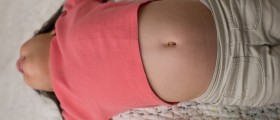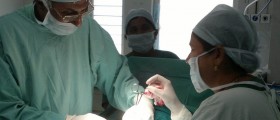
Umbilical hernia is a type of hernia in which content of the abdominal cavity protrudes through the umbilicus (belly button). The belly button is one of several weak spots on the front abdominal wall and it is easy for certain organs from the abdominal cavity to get pushed through it, forming a bulge on the front wall of the abdomen.
Who's at risk?
Even though umbilical hernia predominantly affects children (especially infants), it is also possible to occur among adults.
The very content of the hernia depends. It basically contains organs from the abdomen which are wrapped into a sac made of three layers. The first inner layer called is the peritoneum, the second layer comprises abdominal muscles and the third layer is the skin.
Umbilical Hernia Causes
Babies inside the uterus are fed through the umbilical cord. The umbilical cords connect the placenta with the baby's abdominal muscles and this opening after birth forms the umbilicus. In case the opening does not get covered adequately by muscles after birth, the area remains rather weak and any increase in abdominal pressure may push organs through the umbilicus. Small hernias may gradually close. Large hernias, on the other hand, do not close spontaneously and must be treated surgically.
In adults umbilical hernia develops as a result of increased abdominal pressure. Obesity, heavy weight lifting, tumor in the abdominal cavity, excess of fluid inside the peritoneum, multiple pregnancies and heavy load during delivery period are all contributing factors to formation of umbilical hernia.
Umbilical Hernia Clinical Characteristics
The condition is accompanied by different symptoms and signs. The most prominent sign is bulging and skin protrusion at the umbilicus (the navel region). The bulge ranges from 1 to 6 cm in diameter. It can be even bigger. Typically the bulging increases in size during activities like coughing, sneezing, lifting weight etc. The skin above the hernia is usually of different color comparing to the nearby healthy region (red, yellow or blue).
Umbilical Hernia Treatment
Surgery is the only efficient treatment for umbilical hernia. It is most commonly performed under general anesthesia. After making an incision in the front abdominal wall, the surgeon pushes the protruding tissues and organs into the abdominal cavity and ties the abdominal muscles closely with stitches. In case there is no chance for the abdominal muscles to be connected by sutures, doctors opt for a mesh. It holds the muscles together.
Left untreated umbilical hernia may eventually cause serious complications such as incarceration, strangulation etc.

















Your thoughts on this
Loading...